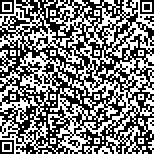| Quote
: |
王璐璐,吴子建,蔡荣林,胡玲,刘磊,余情,何璐.电针“神门”与“太渊”对急性心肌缺血模型大鼠心肌组织HCN4表达的研究[J].湖南中医药大学学报英文版,2019,39(5):623-626.[Click to copy
] |
|
| |
|
|
| This paper
:Browser 1811times Download 511times |
| 电针“神门”与“太渊”对急性心肌缺血模型大鼠心肌组织HCN4表达的研究 |
| 王璐璐,吴子建,蔡荣林,胡玲,刘磊,余情,何璐 |
| (安徽中医药大学研究生院, 安徽 合肥 230012;安徽中医药大学针灸经络研究所, 安徽 合肥 230038) |
| 摘要: |
| 目的 探究电针经穴效应、后效应,比较电针心经原穴"神门"与肺经原穴"太渊"后在急性心肌缺血(AMI)模型大鼠心肌组织内超极化激活的环核苷酸门控通道4(HCN 4) mRNA与蛋白表达的影响。方法 大鼠随机分为正常组、模型组、电针"神1"组、电针"神2"组、电针"太1"组、电针"太2"组,每组10只。模型组、电针组复制AMI模型,电针组在模型复制后1 d予以7 d的治疗,电针最后一次即刻和次日同等时间分别取材,每组6只。以RT-qPCR、western-blot法分析心肌组织HCN4 mRNA相对表达量及蛋白平均相对表达量。结果 HCN4 mRNA和蛋白表达量:与正常组比较,模型组表达量二者显著减少(P<0.01);与模型组比较,"神1""神2"和"太1"组二者表达量显著增多(P<0.01);与"神1"组比较,"神2" "太1"和"太2"组二者表达量显著减少(P<0.01);与"神2"组比较,HCN4 mRNA相对表达量"太2"组显著减少(P<0.01),HCN4蛋白表达量"太2"组显著减少(P<0.01);与"太1"组比较,"太2"组二者表达量显著减少(P<0.01)。结论 电针"神1" "神2" "太1"组在治疗AMI大鼠模型中,能显著增加HCN4 mRNA和蛋白表达量,电针"神1"组效果最为显著,电针"神门"和"太渊"均具有后效应,二者具有相对特异性差异且在一定程度上有持续的后效应的表达。 |
| 关键词: 急性心肌缺血 神门穴 太渊穴 相对特异性 超极化激活 环核苷酸门控通道 |
| DOI:10.3969/j.issn.1674-070X.2019.05.014 |
| Received:January 07, 2019 |
| 基金项目:国家自然科学基金面上项目(81574083,21571180);国家重点基础研究发展计划(2015CB554504);安徽高校科研创新平台建设项目(2015TD033) |
|
| Study on the Expression of HCN4 in Myocardial Tissue of Rats with Acute Myocardial Ischemia by Electroacupuncture Shenmen (HT7) and Taiyuan (LU9) |
| WANG Lulu,WU Zijian,CAI Ronglin,HU Ling,LIU Lei,YU Qing,HE Lu |
| (Graduate School of Anhui University of Chinese Medicine, Hefei, Anhui 230012, China;Institute of Acupuncture and Moxibustion, Anhui University of Chinese Medicine, Hefei, Anhui 230038, China) |
| Abstract: |
| Objective To explore the acupoint effects and the post-effect of electroacupuncture, and to compare the effects of expression on cyclic nucleotide gated channel 4 (HCN 4) mRNA and protein activated by hyperpolarization in myocardial tissue in rats with acute myocardial ischemia (AMI) after electroacupuncture at the heart channel original point Shenmen (HT7) and the lung channel original point Taiyuan (LU9). Methods The rats were randomly divided into a normal group, a model group, an electroacupuncture "Shen1" group, an electroacupuncture "Shen2" group, an electroacupuncture "Tai1" group, and an electroacupuncture "Tai2" group, with 10 rats in each group. AMI models were replicated in the model group and the electroacupuncture group. The electroacupuncture group was treated 7 days after the model was replicated 1 day, and 6 AMI models were taken from each group immediately at the last time and at the same time the next day. The relative expression of HCN4 mRNA and the relative expression of protein in myocardial tissue were analyzed by RT-Qpcr and western-blot. Results HCN4 mRNA and protein expression levels:compared with the normal group, the expression levels in the model group were significantly reduced (P<0.01). Compared with the model group, the expression levels of "Shen1", "Shen2" and "Tai1" groups were significantly increased (P<0.01). Compared with "Shen1" group, the expression levels of "Shen2", "Tai1" and "Tai2" groups were significantly reduced (P<0.01). Compared with the "Shen 2" group, the relative HCN4 mRNA expression in the "Tai2" group were significantly decreased (P<0.01), and the HCN4 protein expression in the"Tai2" group was significantly decreased (P<0.01). Compared with the "Tai1" group, the relative expression in the "Tai2" group was significantly reduced (P<0.01). Conclusion The electroacupuncture "Shen1", "Shen2" and "Tai1" groups can significantly increase the expression level of HCN4 mRNA and protein in the AMI rat model. The electroacupuncture "Shen1" group has the most significant effects. The electroacupuncture at both Shenmen (HT7) and Taiyuan (LU9) have post-effect, and the two have relatively specificity and have a sustained expression of persistence to some extent. |
| Key words: acute myocardial ischemia Shenmen(HT7) Taiyuan(LU 9) relatively specificity hyperpolarization activation cyclic nucleotide gated channel |
|

二维码(扫一下试试看!) |
|
|
|
|


